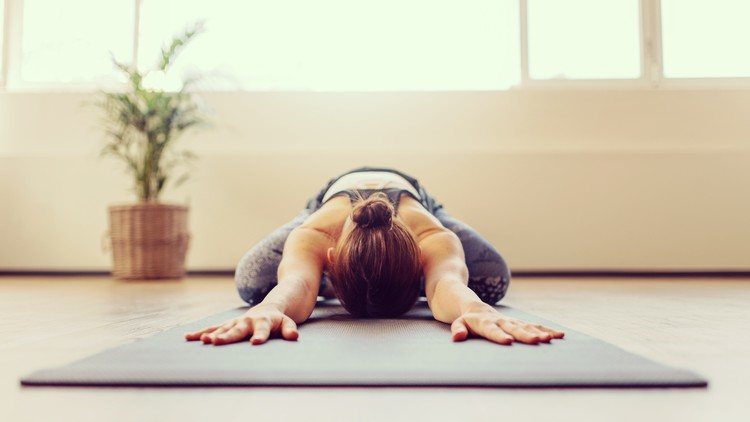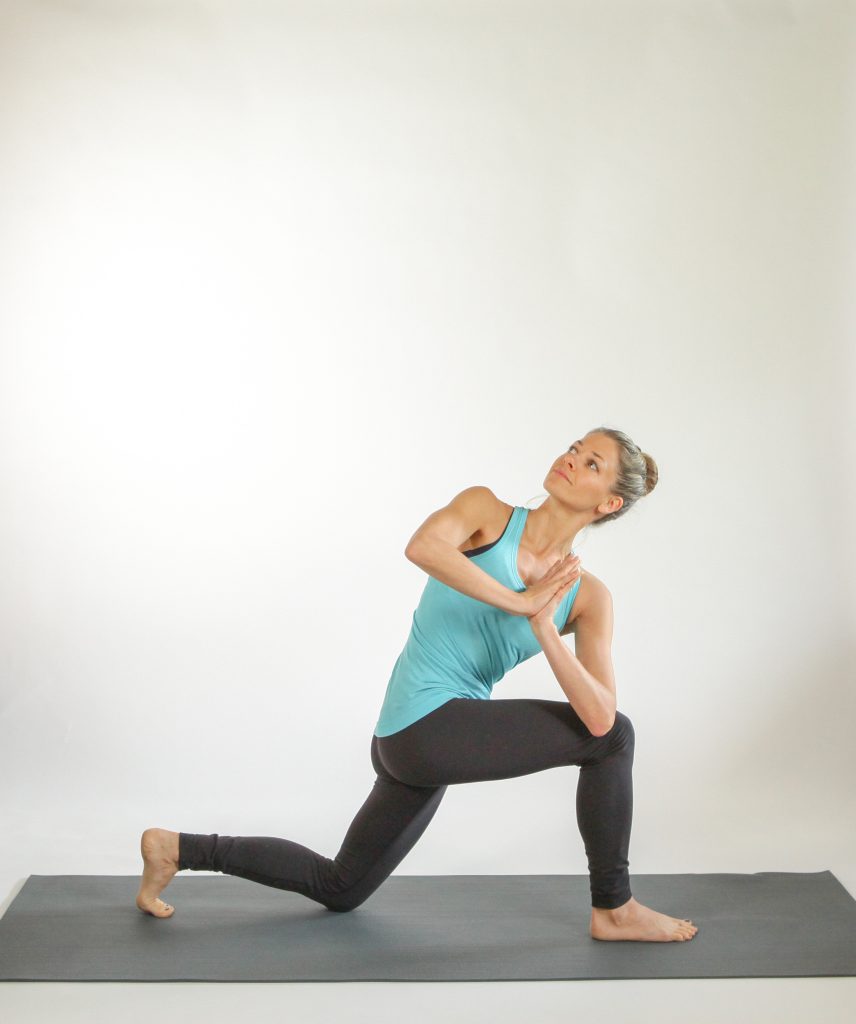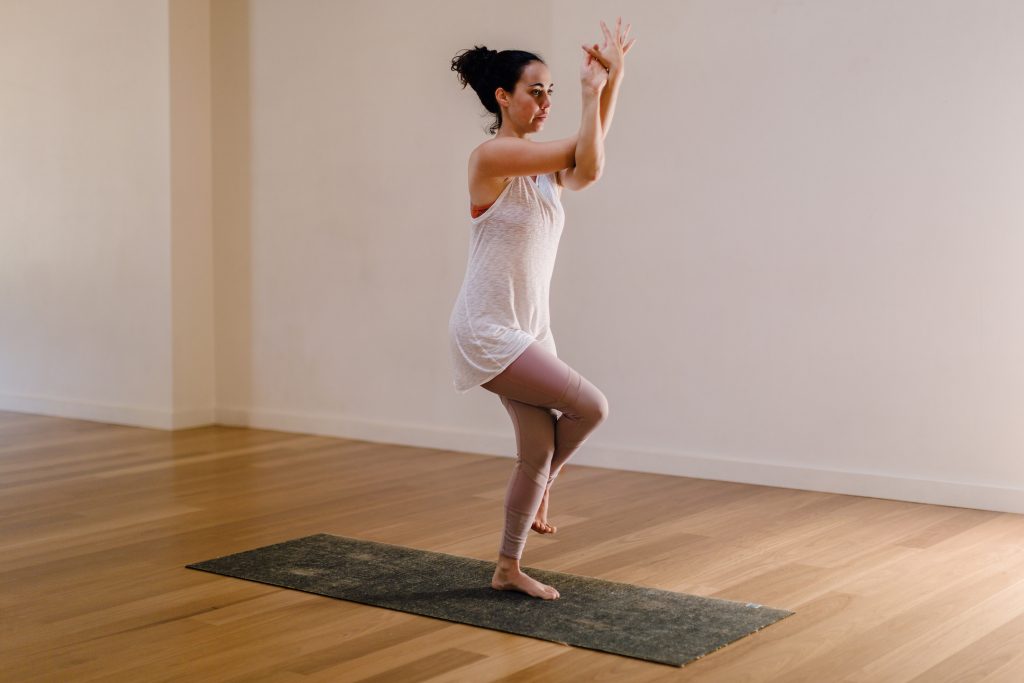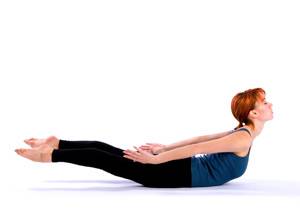Suffering from Sciatica
by Rene Hawthorne | December 14, 2020 6:10 pm
The muscle area of strain and pain that my clients and students ask for help with most often is the sciatic nerve area. Sciatica is the term used when describing irritation of the lower back area where the sciatic nerve is located. It’s often described as a shooting pain from the low back and buttocks area, all the way down the the leg(s). This pain can interfere with things like sitting, lying flat on your back, or simply walking. The sciatic nerve is the longest and widest single nerve in the body. It begins in the low back and runs down the entire length of the back of each leg. The external hip rotator muscle, called the piriformis, is a common pinpoint of pain in the sacrum for many people. I often refer to the sacrum area in my yoga classes as the Bermuda Triangle because it forms a triangle in that area of the low back. The piriformis muscle is connected to the lower back through the gluteus and ends at the upper thigh bone providing leg and hip, leg and foot rotation and movement.
Causes of sciatica pain are compression of the lower spine which can be due to bone related injuries such as herniated, bulging disc’s, spinal stenosis, or muscle related injuries. Some sciatic pain is minor, some so severe it can be debilitating. Each person can feel this differently. for helping to correct this but be aware it can also be an irritant. For instance, forward folds with legs straight can make things worse, but adding a slight bend to the knees will stretch that muscle area with little irritation. Also, back bends will compress the sciatic area, so be sure to lift and lengthen out of the spine before doing those poses.
Poses for the Piriformis Muscle:
Kneeling:

Child’s Pose – best and easiest pose to elongate the low spine and stretch the hips, relieving compression. Begin on all fours in a table top position, ease your bottom back to your heels and walk your arms out in front until you’re all the way down. Widen the knees for a variation to allow space for the belly in between the legs.
Reclining:
Reclined Pigeon Pose – lying on the back with knees bent, cross right ankle over the left thigh, creating a figure 4 shape. Gently draw the knee towards the chest, interlacing the hands behind the left thigh or over the left shin. Keep the knee open and flex the feet as you hold the stretch and breathe. Repeat on other side.
*Reclined Figure 4 Bridge Pose – same as above, but press into,the foot and lift the hips off the mat while holding the ankle over the knee with knee opening and hips pushing up and foot flexed. Repeat on other side.
Twists:

Kneeling Crescent Lunge with twist – one knee down in a lunge, both knees bent at 90 degrees, with a strong tailbone tuck to keep the hips stable and squared, engage the belly and squeeze the midline in the thighs, twist towards the bent knee side of the mat, gently rotating from the hips and not the low back. Open arms front and back, using breath to move in and out of the twist. Repeat on other side.
Half Lord of the Fishes Pose – sit tall with both legs extended, cross your right leg over the left, placing your right foot in the outside of the right glute, place your right hand behind your sacrum, keep it straight and strong as support. Inhale reach your left arm high and lengthen the spine before twisting and put your left elbow on the outside of your right thigh. Repeat on other side.
Standing:

Eagle Pose – begin standing, inhale reach arms high and cross right arm under the left holding opposite shoulders or wrapping arms. Bend knees deeply and transfer your weight to your left foot and cross your right leg over the left thigh. Keep a block handy to put pressure on toes of crossed leg, and internally rotate the thigh bones, squeezing the midline in the thighs. Repeat on other side.
Seated:
Cowface Pose – seated crisscross legs so that the knees stack, inhale lifting through the torso, lengthen the spine and bend forward from the hips, extend arms forward on the mat and relax the neck bringing the nose to the knee on top. Add a block beneath the bottom for modification.
Repeat on other side.
Fire log Pose – seated, frame your right leg along the top corner of your mat, with your right shin along the top of the mat, and your right thigh along the side of the mat. Stack your left leg in the same manner over the top. Trying to keep a 90 degree angle, use blocks for support and flex both feet. Try to sit tall adding a folded blanket beneath the bottom for modification. Repeat on other side.
Prone:
*Baby Cobra Pose – lying on the belly, bring the hands under the shoulders, root through your tailbone as you engage your core by squeezing he inner thighs together, lift the heart forward using the hands to lengthen the spine. Add a block between the legs to feel the thighs active while relaxing the buttocks.

*Locust Pose – lying on the belly, rest legs so that toes turn inward and heals outward creating space in the sacrum, pull legs together and press firmly into the tops of the feet and lift the chest off the mat while keeping the heart lifted. Arms can be forward, backward or out to the sides.
*These poses are back bends and must be practiced carefully. Be sure to lengthen the spine to avoid further compression. Modify by using smaller movements to start.
Everyday life can also irritate sciatica pain, including poor posture, sitting for long periods, keeping a wallet in the back pocket while sitting, and pregnancy. Be more mindful in your everyday life to help avoid painful flair ups. While there is no cure for sciatica, there are remedies such as lifestyle changes and practicing yoga that can help prevent future issues. It’s important to determine if the pain is due to muscle related problems or compression. If the sciatic pain is muscle related, it could be the piriformis is tight. And probably the buttocks, legs and abdominals also need to be strengthened and lengthened. If however the pain is due to bone issues such as compression of a disc, it’s important to work toward decompressing the lower lumbar area of the spine by tucking the tailbone and lifting through the ribs while stretching, doing yoga, and even during your daily routine.
Be very cautious and listen to your body signals. Check with your doctor and ask a fitness professional for help to guide you when doing these yoga poses. These postures can relieve sciatic pain, but they can also worsen it or even cause further damage if not done correctly. Remember to never push yourself beyond your capability. Work towards strengthening and stretching in a healthy and safe way to achieve long term relief from sciatica.
Namaste.
The light in me honors the light in you.
Rene’ Hawthorne
The Lotus Chick
Source URL: https://yogadigest.com/suffering-from-sciatica/